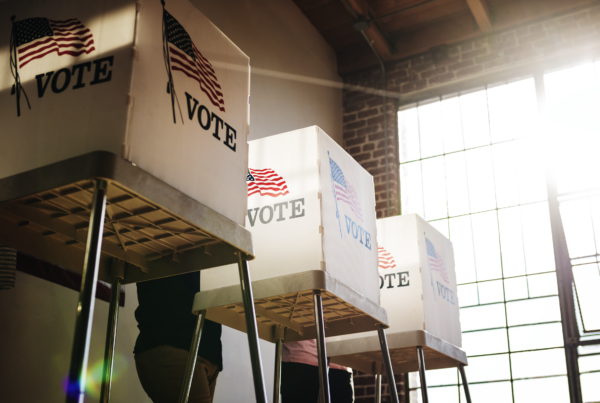Evidence about the Involvement and Influence of Interest Group Advertising
(MIDDLETOWN, CT) February 6, 2015 – Two comprehensive studies of the campaign ad trends from the 2014 election have been published by the researchers from the Wesleyan Media Project, in addition to a piece on disclosure and campaign ads.
“Political Advertising in 2014: The Year of the Outside Group,” by Erika Franklin Fowler and Travis Ridout, and “Interest Group Issue Appeals: Evidence of Issue Convergence in Senate and Presidential Elections, 2008-2014,” by Michael Franz appear in the most recent issue of The Forum: A Journal of Applied Research in Contemporary Politics.
![]()
Highlights from “Political Advertising in 2014” include:
- After more than a decade of steadily rising campaign ad volumes and negativity levels, both plateaued in 2014.
- While Republicans topped Dems in gubernatorial ad airings (310,431 to 278,542) during the general election, Democrats held ad advantages in House races (249,911 vs. 183,161) and in Senate races (283,917 vs. 251,668).
- Outside groups played a larger role in 2014 than in years past in the most competitive races, especially those for the U.S. Senate. Dark money groups sponsored an increasing share of ads.
- In 2014, advertising started earlier in Senate and House races.
- Jobs faded as an issue in political advertising in 2014, while the Affordable Care Act remained a highly popular topic in Republican advertising. Issues covered in ads varied widely state-to-state for House and Senate races, with no overarching theme emerging nationally.
![]()
Highlights from “Interest Group Issue Appeals” include:
- Considering ad buys in Senate elections between 2008 and 2014 and presidential elections of 2008 and 2012, this paper aims to examine the issue content of ads sponsored by candidates compared to those sponsored by outside groups and party committees on the candidate’s behalf. Do allied sponsors air ads about the same issues in a campaign? Or do they cover different issues?
- The paper finds that such “issue convergence” was lower in 2014 than in previous Senate elections. There is no evidence that outside groups in 2014 were more in sync with their preferred candidates on the issues covered in ads.
- Second, the paper examines the effect of high and low levels of “issue convergence” on election outcomes. Results show that high rates of issue convergence are only weakly related to election outcomes, and not always in consistent ways. This suggests that allies in a race need not devote time and energy to coordinating a similar message strategy. Higher or lower levels of issue convergence are not clearly related to better ad effects.
![]()
In addition, “Sponsorship, Disclosure and Donors: Limiting the Impact of Outside Group Ads,” by Ridout, Franz and Fowler, was published in Political Research Quarterly.
Highlights from that paper include:
- Interest group advertising from dark money sources has grown; only 26% of federal airings in 2011-12 were from sources that fully disclosed their donors (Table 1, pg. 24)
- Despite extensive advertising, the vast majority of the public has not heard of prominent interest group advertisers regardless of whether or not they disclose (Table 2, pg. 25)
- 62% had not heard of Crossroads GPS
- 76% had not heard of Priorities USA Action
- Building on a small but growing literature, the authors demonstrate that advertising from unknown interest groups is viewed more credibly and ultimately moves intended vote choice more than ads from candidates.
- Disclosure—either in the ad itself or through news media—levels the paying field in ad effectiveness, but does not make interest group ads any less effective than candidate advertising.
![]()
For more information on these publications, please contact Lauren Rubenstein at Wesleyan’s Department of Media Relations, (860) 685-3813 or lrubenstein@wesleyan.edu.



